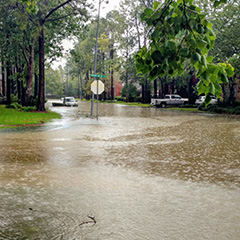Help from the IRS for Hurricane Harvey Victims
September 11, 2017 | IRS Regulation, Tax Planning, Tax Preparation
 Due to recent devastation caused by Hurricane Harvey, the IRS is responding by offering victims of the store additional time to fulfill tax responsibilities and complete tax-related tasks.
Due to recent devastation caused by Hurricane Harvey, the IRS is responding by offering victims of the store additional time to fulfill tax responsibilities and complete tax-related tasks.
“This has been a devastating storm, and the IRS will move quickly to provide tax relief to hurricane victims,” said IRS Commissioner John Koskinen.
“The IRS will continue to closely monitor the storm’s aftermath, and we anticipate providing additional relief for other affected areas in the near future.”
Hurricane Harvey victims in affected parts of Texas now have until January 31, 2018, to file certain individual and business tax returns and make certain tax payments, the IRS announced.
This includes an additional filing extension for taxpayers with valid extensions that run out on October 16, 2017, and businesses with extensions that run out on September 15, 2017.
The IRS is now offering this expanded relief to any area designated by the Federal Emergency Management Agency, as qualifying for individual assistance. Click here for a current list of counties. However, taxpayers in localities added later to the disaster area will automatically receive the same filing and payment relief.
Relief for Affected Individuals
Various tax filing and payment deadlines that occurred starting on August 23, 2017 are postponed by the tax relief. As a result, affected individuals and businesses will have until January 31, 2018, to file returns and pay any taxes that were originally due during this period. This includes the September. 15, 2017 and January. 16, 2018 deadlines for making quarterly estimated tax payments.
For individual tax filers, it also includes 2016 income tax returns that received a tax-filing extension until October. 16, 2017. The IRS noted, however, that because tax payments related to these 2016 returns were originally due on April 18, 2017, those payments are not eligible for this relief.
Relief for Affected Businesses
Also affected are a variety of business tax deadlines including the October. 31 deadline for quarterly payroll and excise tax returns. In addition, the IRS is waiving late-deposit penalties for federal payroll and excise tax deposits normally due on or after August 23 and before September 7, if the deposits are made by September 7, 2017. IRS.gov has provided details on available relief on the disaster relief page.
Any taxpayer with an IRS address of record located in the disaster area is automatically provided filing and penalty relief. Thus, taxpayers need not contact the IRS to get this relief. However, if an affected taxpayer receives a late filing or late payment penalty notice from the IRS that has an original or extended filing, payment or deposit due date falling within the postponement period, the taxpayer should call the number on the notice to have the penalty abated.
In addition, the IRS will work with any taxpayer who lives outside the disaster area but whose records necessary to meet a deadline occurring during the postponement period are located in the affected area.
Taxpayers qualifying for relief who live outside the disaster area need to contact the IRS at 866-562-5227. This also includes workers assisting the relief activities who are affiliated with a recognized government or philanthropic organization.
A Choice on When to Claim
Businesses and individuals who suffered uninsured or unreimbursed disaster-related losses can choose to claim them on either the return for the year the loss occurred (in this instance, the 2017 return normally filed next year), or the return for the prior year (2016).
The tax relief is part of a coordinated federal response to the damage caused by severe storms and flooding and is based on local damage assessments by FEMA. For information on disaster recovery, visit disasterassistance.gov.
For information on government-wide efforts related to Hurricane Harvey, please visit: https://www.usa.gov/hurricane-harvey.
